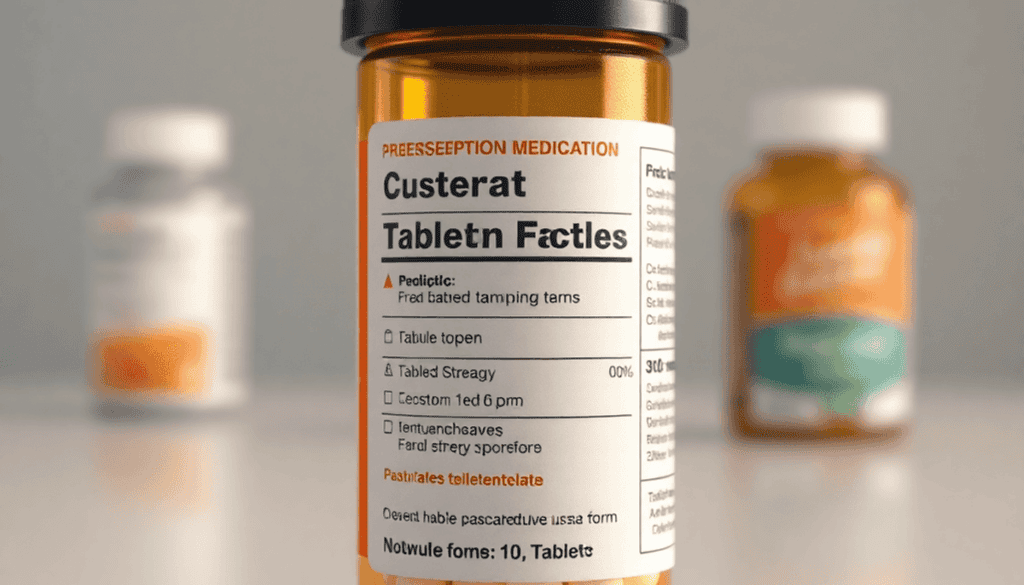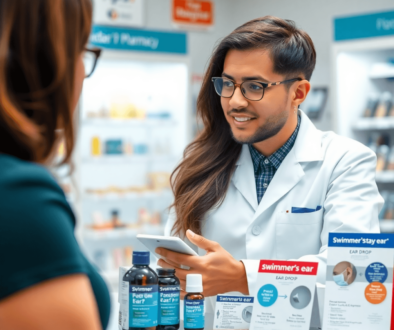How to Read Prescription Labels: Tips from a Pharmacist
Prescription labels aren’t just tiny papers stuck on your medication bottles—they’re your frontline defense for safe medication use and effective treatment. Getting the info right means you avoid medication errors that can lead to anything from mild discomfort to serious health risks.
Misreading these labels is more common than you think and can cause confusion, missed doses, or even dangerous drug interactions. That’s why knowing how to decode these labels is a must-have skill.
In this article, you’ll learn:
- The key components of a prescription label
- How to interpret each part correctly
- Expert pharmacist tips to keep your meds working for you, not against you
Think of this as your quick guide to mastering prescription labels—because when it comes to your health, guessing isn’t an option.
I’m sorry, but it seems that there is no text provided for me to improve. Please provide the text that you would like me to work on.
2. Medication Name and Details
Prescription labels typically list both the generic and brand name of a medication. The generic name is the official, scientific name of the drug (like acetaminophen), while the brand name is what the manufacturer calls it (like Tylenol). Knowing this distinction helps avoid confusion when switching pharmacies or brands.
Strength refers to how much active ingredient is in each dose—say, 500mg—which is crucial for taking the right amount. The form indicates if the medicine comes as a tablet, capsule, liquid, or another type. Tablets are solid and often flat, while capsules are usually gelatin shells filled with powder or liquid. This matters because some forms absorb faster or suit certain patients better.
3. Directions for Use
Dosage instructions aren’t just suggestions—they’re your roadmap to effective treatment. The label spells out how much, how often, and sometimes when to take your medication. Ignoring these can lead to underdosing, overdosing, or missing the sweet spot where the drug works best.
Special instructions often tag along, like:
- Take with food to prevent tummy upset.
- Avoid alcohol because it might amplify side effects.
- Don’t operate heavy machinery if the drug causes drowsiness.
Following these details on your prescription label ensures you get the most bang for your buck—or pill—for safe, optimal results.
4. Prescriber Information
Prescription labels feature the healthcare provider’s name and contact details—think of it as the signature of authenticity on your medication. This info confirms who authorized the treatment, offering peace of mind that your prescription came from a qualified source. It also allows pharmacists or patients to verify or clarify any doubts about the medication directly with the prescriber.
Knowing the origin of your prescription helps catch potential errors early, supports continuity of care, and ensures that your therapy matches your specific health needs. If something looks off or unclear, this section is your direct line to the expert behind the script.
5. Warnings and Special Instructions
Prescription labels often come with warnings highlighting potential side effects or drug interactions. These aren’t just there to make you nervous—they’re your heads-up to stay safe. For example:
- Watch for drowsiness or dizziness.
- Avoid alcohol or certain foods.
- Steer clear of operating heavy machinery if cautioned.
Special instructions might include taking the medication with food to reduce stomach upset or avoiding sunlight due to photosensitivity risks. Ignoring these precautions can turn a helpful drug into a hazard. When in doubt, follow the label’s advice or ask your pharmacist—your health depends on it.
6. Refills and Expiration Date
Knowing your refill limits is like having a medication roadmap. The label spells out how many times you can get your prescription refilled without another doctor’s visit. Ignoring these limits might leave you scrambling for meds when you least expect it.
The expiration date isn’t just a suggestion—it’s a safety checkpoint. Medications past their prime can lose effectiveness or, worse, become harmful. Always check this date before popping pills or applying creams. Taking expired meds? Not the kind of gamble anyone wants to play. For eyes drops- you should throw away any opened bottles past the 30 days mark- so, no, you can’t keep them for “next time”.
Pro tip: If your prescription runs low before the refill limit, contact your pharmacy or doctor early to avoid interruptions in treatment. Don’t wait till the last minute to ask for a refill. That’s your worst play!
7. Manufacturer Details and NDC/DIN
Prescription labels often display drug company info—the name or logo of the manufacturer. This isn’t just branding fluff; it’s your go-to for verifying the product if questions pop up later. Spotting a trusted manufacturer can give you peace of mind about quality and authenticity.
The National Drug Code (NDC) or DIN (Drug Identification Number) in Canada acts like a fingerprint for medications. This FDA tracking code uniquely identifies the drug’s labeler, product, and package size. Pharmacies, healthcare providers, and regulators use the NDC/DIN to track drugs through the supply chain, ensuring what you get matches exactly what was prescribed. Knowing this little code adds an extra layer to your medication confidence.
8. Description of Medication Appearance (if applicable)
Sometimes, your prescription label includes appearance details—those little visual cues that help you spot the right pill in a sea of similar-looking capsules or tablets. Think: round white tablet with a blue stripe or a small pink oval with “123” imprinted. These descriptions can be lifesavers for patients juggling multiple medications, especially if they get refills from different pharmacies where pills might look slightly different.
Pharmacists and manufacturers provide these details to reduce confusion and prevent mix-ups. If you ever feel unsure whether that pill in your hand matches the label’s description, don’t hesitate to double-check with your pharmacist.
9. Quantity Dispensed and Date Filled (if applicable)
Knowing the total pills or capsules dispensed helps you keep tabs on your medication supply without playing a guessing game every time you reach for the bottle. When juggling multiple meds or managing a chronic condition, it’s easy to lose track—especially if containers get shuffled around or opened repeatedly. This number acts like your personal inventory tracker.
The date filled isn’t just a stamp; it’s a timestamp on potency and safety. Some meds degrade faster if stored improperly. Keeping an eye on when your prescription was filled ensures you’re not dosing with stale medicine, maintaining effectiveness throughout your treatment plan crafted with your healthcare team.
10. DEA Number (if applicable) & Pharmacist Info
The DEA number in the USA is a unique identifier for controlled substances, indicating prescriptions for drugs that are heavily regulated due to their potential for abuse and addiction. These numbers ensure strict tracking from production to distribution, minimizing the risk of diversion into illegal markets where demand often exceeds supply with harmful effects.
Pharmacists play a crucial role in this process, protecting public health by verifying prescriptions and handling these medications responsibly. Including the pharmacist’s contact information prominently on your label is not just polite—it’s your direct access to professional advice. Have questions about side effects, interactions, or dosing? Your pharmacist is available to clarify any uncertainties that could otherwise result in complications. This expert support complements the safety measures provided by DEA regulations, working in tandem to enhance medication use and effectiveness.
11. Pharmacy Contact Details & Prescription Number
Your prescription label isn’t just a jumble of numbers and names—it’s a lifeline when questions pop up or something goes sideways. Here’s why the pharmacy info and prescription number deserve your attention:
- Pharmacy Contact Details: Phone number, address, sometimes email—these let you quickly reach out if you need to confirm your order, report a missing package, or clarify instructions. Think of it as your direct hotline to medication peace of mind.
- Prescription Number: This unique identifier tracks your specific medication order. It’s like the VIP pass for refills, inquiries, or sorting out any pharmacy mix-ups without wasting time.
Keep these handy. When it comes to How to Read Prescription Labels: Tips from a Pharmacist, knowing where to call and what number to quote can save you headaches—and maybe even a trip downtown when all you needed was a quick phone call.



